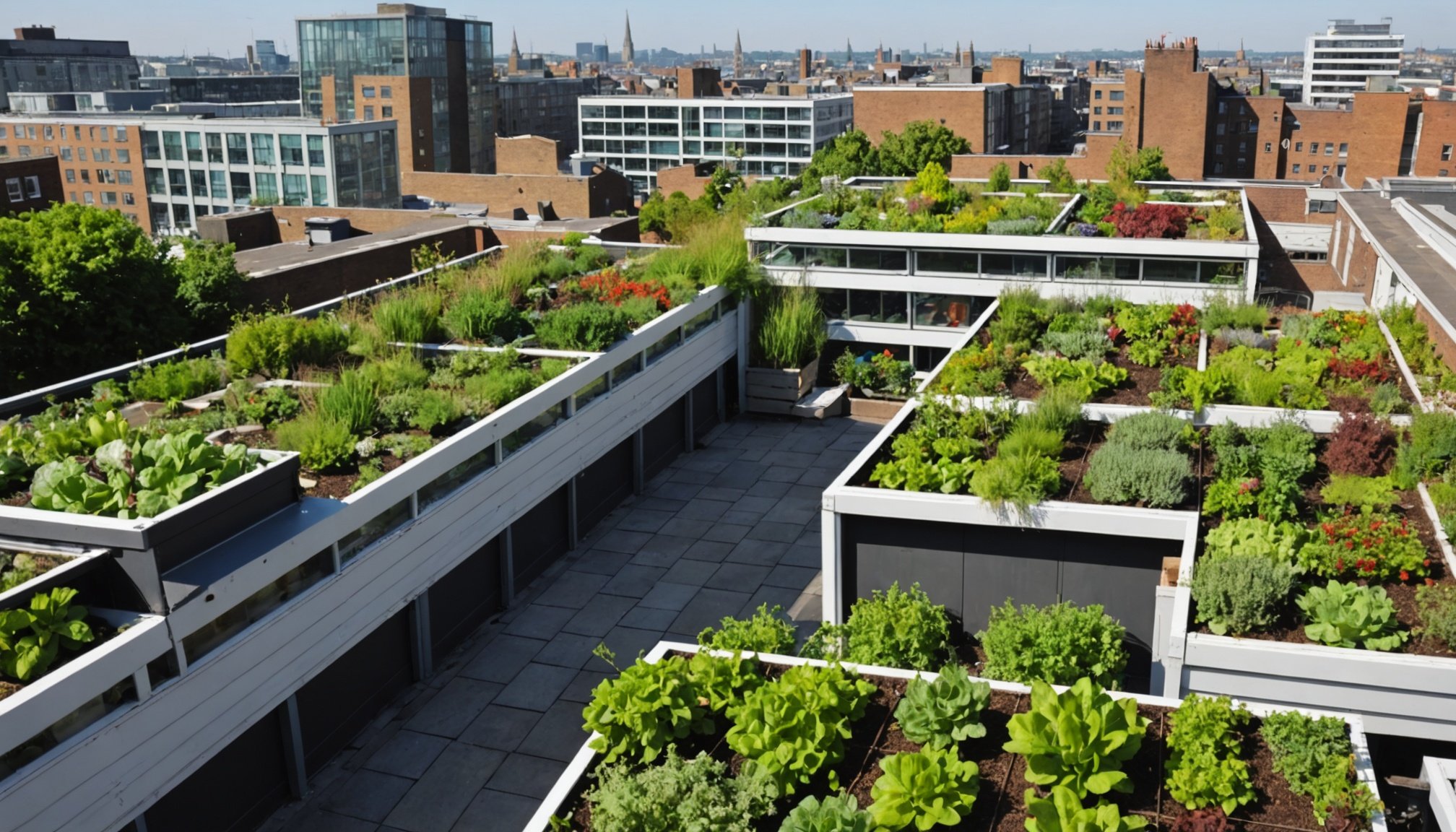Overview of Rooftop Gardens
Rooftop gardens are an innovative way to incorporate green spaces into densely populated urban areas. These gardens are situated atop buildings and are designed to cultivate plants, providing a lush escape from the concrete surroundings. Historically, these gardens have evolved from ancient Babylon’s Hanging Gardens to modern urban gardening initiatives, showcasing a transformation in architectural and ecological design.
In urban settings, the importance of rooftop gardens cannot be understated. As cities grow taller and denser, the availability of green spaces diminishes. Rooftop gardens address this by offering ecological benefits, such as improved air quality, temperature regulation, and increased mental well-being for city dwellers. They play a pivotal role in augmenting natural habitats within concrete jungles, thus enhancing the quality of life.
Also read : Effective approaches for uk residents to minimize bird strikes on skyscrapers
The evolution of rooftop gardens in urban settings highlights their significance in creating sustainable cities. With pressing environmental concerns, they offer a solution-oriented approach to urban gardening. Integrating nature into daily life not only beautifies cityscapes but also offers multiple ecological advantages, making urban environments healthier and more sustainable for both people and wildlife.
Enhancing Urban Biodiversity
Rooftop gardens play a key role in boosting biodiversity within urban landscapes. By transforming otherwise barren rooftops into lush habitats, these gardens provide essential ecosystem services. One of the primary services is habitat creation for local wildlife, including various pollinators such as bees and butterflies. As cities expand, natural habitats often shrink, making it crucial to incorporate such spaces to maintain and improve urban ecology.
In parallel : How Climate Change Influences Coastal Bird Populations in the UK: Unveiling the Impact
Wildlife-friendly gardens on rooftops offer several advantages. These include enhancing local air quality, managing urban heat, and providing stormwater retention. By emulating natural environments, they support both flora and fauna, promoting a balanced ecosystem amidst the urban sprawl. Providing nesting sites or food sources for birds and insects helps maintain the health of these communities, leading to a thriving urban ecosystem.
Additionally, the encouragement of pollinators in these gardens aids in plant reproduction and supports wider urban gardening efforts. Rooftop gardens, thus, do not just beautify cityscapes but serve as essential ecological hubs. By integrating these green oases, cities create resilient environments promoting coexistence between urbanisation and nature, thereby supporting a richer biodiversity.
Case Studies from the UK
Rooftop gardens in the UK have become emblematic of urban ecology innovations, providing inspiring examples of how to integrate nature into cityscapes. Significant projects in cities like London and Manchester showcase the potential of rooftop gardens to transform urban environments. Notable examples include the Barbican Centre in London, where a superb rooftop oasis serves as a haven for both wildlife and community engagements.
Evaluations of these projects highlight impressive impacts on biodiversity. In particular, the study of Manchester’s city centre rooftop gardens showed increased species diversity, positively contributing to local urban ecology. Wildlife presence, such as birds and butterflies, has notably increased, proving the ecological value of these projects.
Testimonials from both community members and experts underscore the transformative influence of these green initiatives. Residents frequently express delight in having serene spaces amidst bustling cities, while experts like environmental scientists confirm the eco-friendly benefits provided by these hubs.
These UK case studies underline the critical importance of rooftop gardens in optimizing urban biodiversity. However, each project’s success serves as a beacon for others to follow, encouraging more widespread adoption and consideration of ecological benefits in urban planning.
Implementation Strategies for Rooftop Gardens
Creating rooftop gardens involves meticulous planning and design to maximise their ecological benefits while ensuring sustainability. To successfully implement a rooftop garden, consider the structural integrity of the building. Consulting with structural engineers can guarantee that roof load capacities are not exceeded, ensuring safety and longevity.
Selecting the right plant varieties is a crucial step. Opt for hardy species that withstand urban conditions, encouraging biodiversity while requiring minimal maintenance. Native plants are particularly beneficial, supporting local pollinators like bees and butterflies.
Consider sustainable practices such as rainwater harvesting systems for irrigation. These not only conserve water but also enhance stormwater retention, a vital ecosystem service in urban settings. Implementing windbreaks can protect plants from harsh winds, ensuring your garden flourishes year-round.
When designing your rooftop garden, aim for a balance of greenery and usable space. Paths and seating areas make the garden more accessible and enjoyable. Vertical gardening options, like trellises or green walls, are excellent for maximising limited space while contributing to the green aesthetic.
Incorporate elements that offer habitats for wildlife, like bird feeders or insect hotels, promoting a vibrant urban ecosystem. These strategies can transform sterile rooftops into thriving ecological sanctuaries.
Community and Scientific Studies Supporting Rooftop Gardens
Recent scientific research highlights the numerous advantages of rooftop gardens, offering compelling evidence of their positive impact on urban biodiversity. Studies point to improved air quality, reduced urban heat islands, and enhanced mental health as primary benefits. This body of work underscores the importance of integrating such green spaces into urban areas, demonstrating how they create sustainable ecosystems within cities.
Furthermore, community-led initiatives play a significant role in expanding the presence of rooftop gardens. By organising workshops and collaborations, local communities actively participate in these gardening efforts, resulting in increased awareness and appreciation for urban ecology. These initiatives not only foster a sense of ownership but also promote social cohesion and community well-being.
Current research identifies gaps in understanding the full potential of rooftop gardens. Investigations into long-term ecological impacts and optimisation of plant selection for local conditions are areas deserving attention. In the UK, further studies could refine implementation strategies, ensuring these green spaces continue to flourish and contribute to urban gardening.
As cities evolve, continued scientific exploration and community engagement will be crucial in maximising the benefits of rooftop gardens, advancing their role in creating healthier urban environments.











